The river dominates the fire but not without consequences
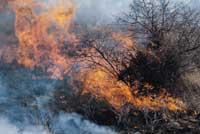
The fires produced naturally have been quite well overcome by the plants, which in some cases are necessary. In ecosystems far from the human being, fires play an important role in diversity, productivity and, in the long term, ecosystem stability. Fire also means the renewal of the matter, especially in the coniferous forests (pine forests, fir trees, larch trees and cypress trees), since the production is usually higher than the one that breaks down. It is true that the fire dries all this matter and turns it into smoke and ashes, but the final products are chemically similar to the initials and the ashes contain useful food for the vegetation. In other cases, fires serve to combat vegetation diseases, such as the elimination of green insect pests.
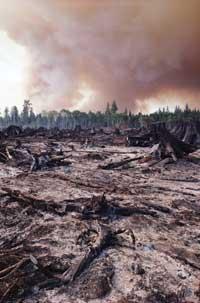
However, fires are not always beneficial and, at the end of autumn, fires caused damage to the fauna and flora, soil and rivers. This last aspect is not very known, but the damage is short and medium term. For example, the flow of water from the river or stream, the number of suspended particles, the transported materials, the concentration of nutrients and the water temperature. Taking into account this, the streams of the inclined basins have greater consequences.
Erosion is the revenge of the fire
The damage caused by the fires in the streams are usually more noticeable than the chemical changes. For example, with the first rain or when the snow begins to melt, the sudden rise of the flow is evident. In fact, although a part of the precipitation or the snow that melts gets infiltrated, the bare basin loses the capacity of precipitation retention and the fire produces an impassable layer, most of the water is poured directly into the river. But it is more harmful than the increase in the flow of water of the river the instability and erosion that produces the water that drops by the speed that reaches. The wooden remains that catch water along the way, the corrosive rocks and the most harmful fine sediments end up in the river bed. It seems that in granite and sedimentary soils, and in basins with steep slopes, the risk of erosion is higher.
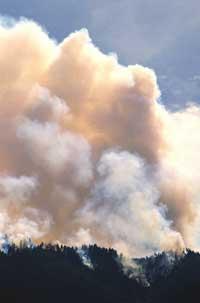
The impact of erosion depends on the size of the sediment. The large sediments, in decline, despite the risk of mortality of eggs and young fish, and the alteration of fish habitat, also offer protection to fish. Taking into account that the lack of vegetation in the basin affects river water currents, this protection can be of great importance. On the contrary, when the sediments that reach the river are fine, the damage is serious, especially for the eggs and the young fish. The eggs are usually accumulated and the suspended particles are inserted into the grooves between the eggs and drowned by lack of oxygen.
Water is not burned but the temperature rises
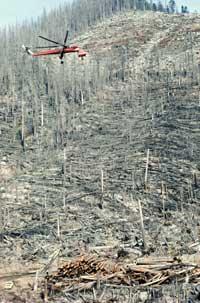
The nakedness of the earth and, in this case, above all, the nakedness of the shores, has another direct effect: the increase in water temperature. This rise is sometimes not very noticeable, but if the sun's rays are intense and the current is slow, the water can rise 12ºC. When tempering water, the fauna in temperate waters increases (to the detriment of salmonids) and decreases the concentration of oxygen. This last change is due, on the one hand, to that by increasing the temperature the water loses the capacity to dissolve the oxygen and, on the other, to that the increase of the aforementioned fauna increases the consumption of oxygen. In addition, without the shade of the vegetation, the underwater luminosity increases for the benefit of the underwater vegetation and, although they release oxygen during the day, is consumed at night. However, the turbidity in the rains is usually high, so the vegetation must also adapt to these rapid changes. Finally, the increase in temperature also facilitates the spread of diseases, which reduces the production of fish.
However, the changes that occur in the temperature of the fires are usually in the medium term and the recovery of the vegetation is sufficient for its recovery.
Something more than water molecules
Water is more than the water molecules and, although it has been mentioned before that the chemical changes are scarce, the measurements have detected, among other things, variations in the levels of nitrogen, phosphorus and acidity.
As for ammonia (NH4+), its biological activity after heat increases considerably, but in a few weeks it disappears. Toning bacteria support more than 100ºC and nitrifying bacteria die between 53-58ºC. In this way, nitrogen reaches the river in the form of ammonium and for its nitrification consumes oxygen from the river. All these changes last a few weeks after the fire.
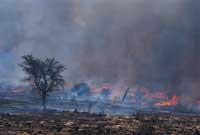
The level of phosphorus and acidity also increase due to fire ash, but in a couple of years the pH is recovered.
It is evident, therefore, that fires also affect rivers and streams, and that in most cases they are adversely affected. From now on, it would be appropriate for the forces of the recovery plans to also move towards the recovery of aquatic ecosystems.
Measures of recovery
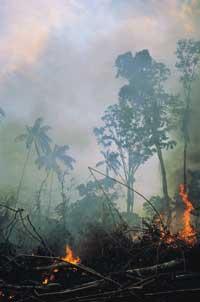
C. C. Study of the impact of fires on rivers and streams. Fernández and J. According to biologists Sánchez, the administrations responsible for the recovery of the burned areas in general do not take into account this problem. However, even though the problems are serious, they do not ask for extra work. The forces should focus mainly on the recovery of vegetation and the protection of the margins of the river or river.
The remains of wood and pebbles recovered by precipitation should not be removed, since, as mentioned above, they are used as protection of fish. In addition, as the wood is roasted, it releases the organic matter and becomes food for microorganisms. As for fine sediments, although it is a complicated and precise task, it is advisable to remove them from the riverbed and, above all, from the brushes so that they do not hang again in the next rains and kill more eggs.
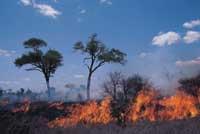
On the other hand, it seems that the habitat for adult fish improves a lot in the first years, but food shortages persist. For their part, fish offspring have more difficulty finding shelters and biologists see the creation of artificial habitats necessary. Finally, it is necessary to prohibit or at least restrict fishing in the stretch of the river or stream affected by the fire. For the river to return to its state, it is calculated that it takes at least 25 years to recover, and that it does not hinder us to work!
Published in the supplement Natura de Gara
Buletina
Bidali zure helbide elektronikoa eta jaso asteroko buletina zure sarrera-ontzian











